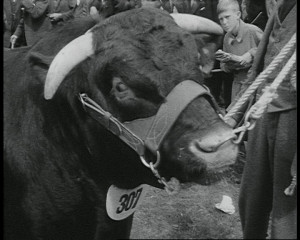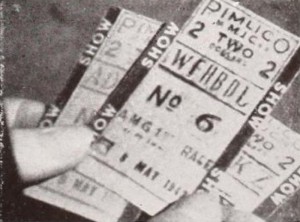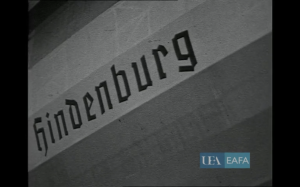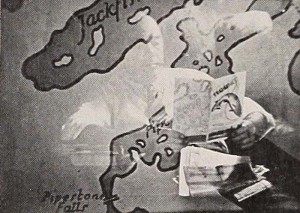
"Three short film sequences detailing competitions, parades and activities at local Agricultural Shows." (EAFA Database)
"Paul L. Kubitschek takes us to the Denver, Rio Grande & Western Railway for a journey to Silverton, Colorado. With all the thrill that comes to those who love the sway of cars and the resounding clatter of the rails amidst the grandeur of lakes and villages in high country flavored with ghost towns and mining arenas. The skeletons of yesterday where wind and rain have beat time and mute evidence of activity long ceased. Where silent memories of the past may be read from the weathered timbers and scraps of metal. A lone rocking chair left to enjoy the warm sun and the beauty of the hills" PSA Journal, Nov. 1958, 47.
"An entertaining documentary of the narrow-gauge train ride from Durango to Silverton, Colorado. Spectacular aerial views add to the impact." Oldfilm.org
"A lover of wild life and good fishing, Russell Jameson has a real fishing picture for those who would like to go into the wilds of British Columbia where the lakes and streams are generously populated with big ones which are willing to make the anglers' acquaintance. Most of the fishing is with barbless hooks for the sport and catch is returned to the stream uninjured. The musical score and sound effects add a great deal to this picture. It will tempt any fisherman with the time and money to indulge in the sport" PSA Journal, Nov. 1958, 48.

"In Turf Tales, Leonard Bauer, jr., has tackled an acceptedly difficult subject for the personal movie maker — and has done well by it. The subject, as might be guessed, is professional horse racing. The setting of Mr. Bauer's study is the relatively ancient track of Pimlico, outside Baltimore, with the climax of the picture provided by a record of its traditional classic, the Preakness. But the strength of Turf Tales derives more from its highly competent sequences of human interest behind the scenes — the early morning time trials, the stable boys and their chores, the track farrier as he shapes the delicate racing shoes and the strange, unexplained mascots of the high strung thoroughbreds. A commendably restrained narrative, set against a musical background, accompanies the film on a sixteen inch disc recorded by Mr. Bauer." Movie Makers, Dec. 1944, 496-497.
"TV You'll See in 83' is a club production and observes that the commercials on TV are getting more numerous all the time. Pretty soon, says the film, they'll squeeze out all program material and TV will be one long string of commercials from morning to night. How will these commercials hold the viewer's interest? The Toronto club gives several examples" PSA Journal, Sept. 1964, 51.
"Flaherty's New York film is a negotiation of modern urban culture (the city) by a filmmaker whose interests had primarily been of the exotic, the folk, the ancient cultures" (Tepperman 32).

"Two short films of the Hindenburg in its hangar after its maiden journey to the USA and the Queen Mary at either the Clyde or Southampton prior to its inaugural cruise." (EAFA Database)

"No better example of human interest in a vacation film will be seen for a long time to come than was exhibited in Two Perfect Weeks, made by Walter F. Hinkle. Strangely enough, there was practically no material of actually catching fish, yet the film gives one the impression that the party consisted of all genuine fishermen and that no more dyed in the wool sportsmen could be found than these happy vacationists. Starting with a clever introduction, the film moves rapidly along into camp. Here, a most handsome array of interest packed close shots serves to tell the story of tired business men at play, until the entire audience is ready to sit down and enjoy a meal of freshly cooked fish. The film ends in a novel way. To signalize the return to civilization, each member of the party is seen shaving off the beard that grew during the two weeks at camp. Although each of the group is introduced by means of a different type of activity, the picturization is at no time slow or dull. The secret lay in the fact that there was no "monkey business" in front of the camera, but rather a good collection of intimate views of the persons going about their various tasks. The color titles are well executed." Movie Makers, Dec. 1939, 632-633.
Total Pages: 79